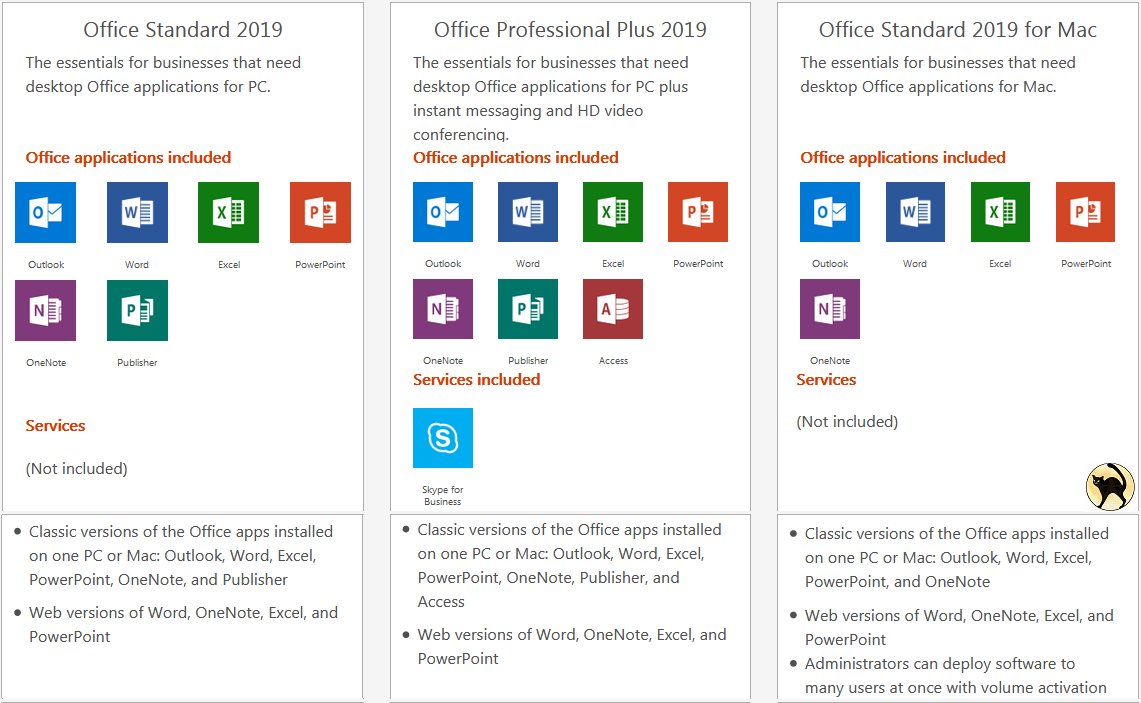This article covers frequently asked questions about the availability of Office from the Mac App Store, and the differences between downloading Office apps directly from Microsoft.
Starting in January 2019, the following Office applications are available for download from the Mac App Store: Word, Excel, PowerPoint, OneNote*, and OneDrive*.
Be Available For Sb
As Microsoft Edge is now available for macOS, is it possible to provide a.Net Core library with.Net bindings to underlining engine, for Win/macOS/Linux, so to use it in my applications. There is a need for a reliable.Net bindings library. Sep 24, 2018 Commercial volume-licensed (trusted) customers can access Office 2019 starting today. Office 2019 is now available for consumer and commercial customers. For consumer customers in China, India, and Japan, Office 2019 suites will be available in the next few months. Certain features are only available in the Mac or Windows versions of Office 2019.

Microsoft Access For Mac Free
Microsoft Access 2019 available from cloud now! Try now free! For Windows, Mac, Android, iOS - no downloading or installation.
Microsoft Access For Mac 2018
* These apps were also available from the Mac App Store in previous years.
What version of Office is available from the Mac App Store?
The Office apps available from the Mac App Store provide the very latest version of Office on the Mac. Word, Excel, PowerPoint, and Outlook require an Office 365 subscription to activate. OneNote and OneDrive do not require an Office 365 subscription, but some premium features may require an Office 365 subscription.
Is this the same as Office 2019?
No. Office 2019 is the one-time purchase, non-subscription product (also known as perpetual). An Office 365 subscription provides always up-to-date versions of Office apps and access to additional premium features and services. The apps available in the Mac App Store are not compatible with Office 2019 licenses.
I currently own Office 2016 for Mac and want to upgrade my version of Office. Should I download Office from the Mac App Store?
If you own the older perpetual release of Office, you can download the new version of the apps from the Mac App Store, and purchase a new Office 365 subscription using the in-app purchase option. In-app purchase offers include Office 365 Home, and Office 365 Personal. Your license from the perpetual release of Office will not work with the app versions from the App Store. Click here to learn about Office 365 subscriptions and pricing.
I already have an Office 365 subscription, and the Office apps are already installed on my Mac. Do I need to do anything?
No. It's likely that you installed Office directly from Microsoft. The Microsoft AutoUpdate app will keep your existing apps up-to-date. The apps in the Mac App Store do not provide functionality beyond what you have today.
If I download Office from the Mac App Store, do I still use Microsoft AutoUpdate to get updates?
Microsoft AutoUpdate is only used to get updates for apps that you download directly from Microsoft. If you download Office from the Mac App Store, then the App Store will provide you with future updates of Office. You may have other Microsoft apps installed on your Mac, and AutoUpdate will continue providing updates just for those apps.
Can I have multiple versions and builds of Office installed on my Mac?
No. Office 365, Office 2019, and Office 2016 use the same application and file names. To see which version of Office you have installed on your Mac, open one of the apps, and look at the License text in the About dialog.
Can I get Office Insider builds from the Mac App Store?
No. The Office apps in the Mac App Store are production releases. Insider builds must be downloaded directly from Microsoft.
How do I cancel my Office 365 free trial that I purchased through the Mac App Store?
To cancel your Office 365 free trial that you purchased through the Mac or iOS App Store, follow the instructions on this page: View, change, or cancel your subscriptions.
This link redirects to the App Store, so please open this link on a Mac, iPad or iPhone.